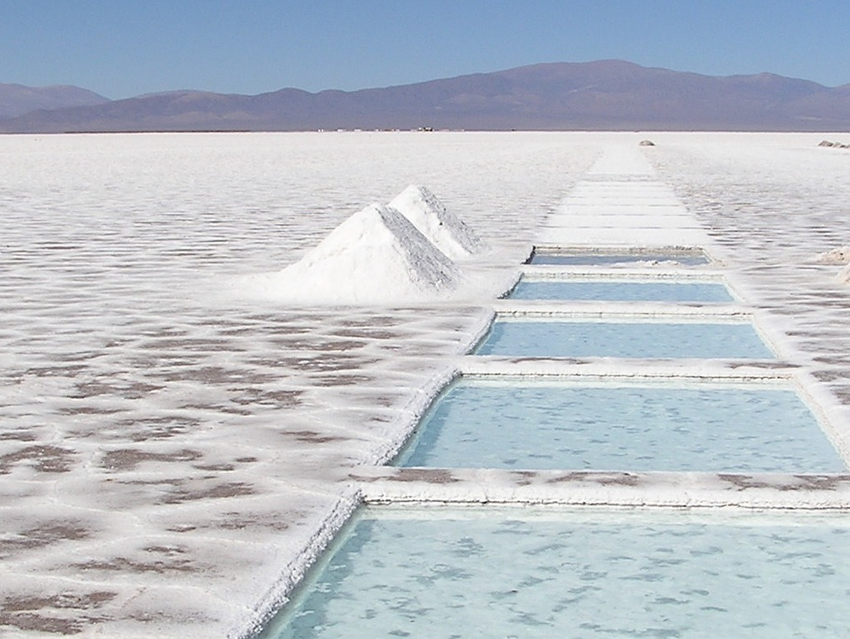We have come to rely on the alkali metal lithium for almost all our power needs on the go. It is the critical component of the rechargeable lithium-ion batteries that keep us connected via our smartphones, tablets, and laptops, and provide those with electric vehicles the energy supply to drive their cars. Unfortunately, as with any extraction of metal, there is a heavy toll in energy and resources to dig this material from the ground and isolate it.
The soft, silvery-white element, the name of which derives from the Greek word for stone, lithos, is highly reactive and flammable in its pure form. It also lies at the heart of our understanding of the Big Bang theory of how the universe began. Its relatively low abundance throughout the cosmos, while not such an enigma to astronomers today, is suggestive of instability at low stellar temperatures that are unheard of for the heavier metals.
Salt Lake Brines
Lithium is present on Earth in brines and minerals, but only in low concentrations. There are some 230 billion tons of lithium dissolved in the sea, and it is present in the Earth’s crust at between 20 to 70 parts per million by weight—mainly in igneous rocks such as granite. New sources, e.g., clays like hectorite, are rare. This causes pressure on materials scientists and chemists to develop new approaches to efficient extraction from the sources available to us.
Yuliang Cao, Wuhan University, China, and colleagues explain that standard approaches to lithium extraction from brines are “inefficient or inadaptable” for salt lake brines that have a magnesium to lithium ratio of six or higher. The team has developed what they refer to as a “highly selective and pollution-free electrochemical extraction of lithium”. Their approach overcomes the ratio problem, ironically enough, by using a polyaniline/lithium “manganate” cell. The cell works even in the presence of impurity ions such as potassium, sodium, and, of course, magnesium.
Structural Boost
The team explains that the structure of polyaniline (PANI) allows them to dope this material with chloride ions to a high degree, which benefits the extraction, allowing lithium chloride salts to form more readily in the extraction process. Moreover, the spinel structure of the mineral component of the cell allows the ready insertion of lithium ions into the material.
In tests, the team has shown that their approach can be used to extract lithium chloride from brine with a high average current efficiency using less than 4 Wh/(mol LiCl). It sustains an efficient extraction for 200 cycles. Additionally, there is no need for other chemical additives, which means lower resource demands and less chemical waste. “Compared with conventional lithium extraction processes, this method avoids using additional chemicals, offering a pollution-free technology for Li+ extraction from brine waters,” the team concludes.
- Highly Selective and Pollution-free Electrochemical Extraction of Lithium by a Polyaniline/LixMn2O4 Cell,
Along Zhao, Jincheng Liu, Xinping Ai, Hanxi Yang, Yuliang Cao,
ChemSusChem 2019.
https://doi.org/10.1002/cssc.201803045



